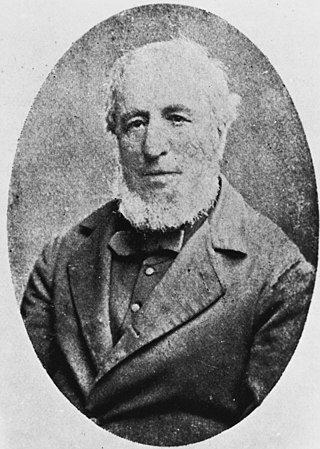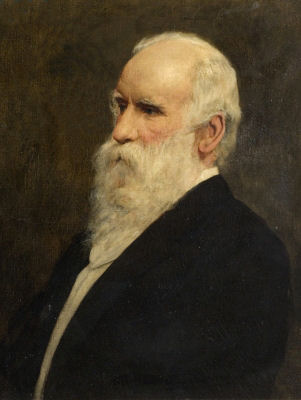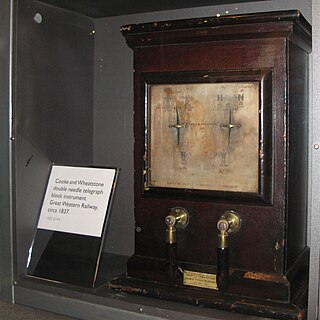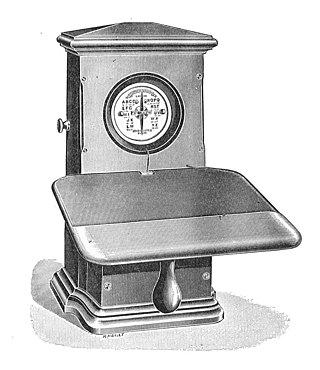
Electrical telegraphs were point-to-point text messaging systems, primarily used from the 1840s until the late 20th century. It was the first electrical telecommunications system and the most widely used of a number of early messaging systems called telegraphs, that were devised to communicate text messages quicker than physical transportation. Electrical telegraphy can be considered to be the first example of electrical engineering.

Telegraphy is the long-distance transmission of messages where the sender uses symbolic codes, known to the recipient, rather than a physical exchange of an object bearing the message. Thus flag semaphore is a method of telegraphy, whereas pigeon post is not. Ancient signalling systems, although sometimes quite extensive and sophisticated as in China, were generally not capable of transmitting arbitrary text messages. Possible messages were fixed and predetermined and such systems are thus not true telegraphs.

Sir Charles Wheatstone FRS FRSE, was an English scientist and inventor of many scientific breakthroughs of the Victorian era, including the English concertina, the stereoscope, and the Playfair cipher. However, Wheatstone is best known for his contributions in the development of the Wheatstone bridge, originally invented by Samuel Hunter Christie, which is used to measure an unknown electrical resistance, and as a major figure in the development of telegraphy.

Transatlantic telegraph cables were undersea cables running under the Atlantic Ocean for telegraph communications. Telegraphy is now an obsolete form of communication, and the cables have long since been decommissioned, but telephone and data are still carried on other transatlantic telecommunications cables. The first cable was laid in the 1850s from Valentia Island off the west coast of Ireland to Bay of Bulls, Trinity Bay, Newfoundland. The first communications occurred on August 16th 1858, but the line speed was poor, and efforts to improve it caused the cable to fail after three weeks.

Edward Davy was an English physician, scientist, and inventor who played a prominent role in the development of telegraphy, and invented an electric relay.

A cable layer or cable ship is a deep-sea vessel designed and used to lay underwater cables for telecommunications, for electric power transmission, military, or other purposes. Cable ships are distinguished by large cable sheaves for guiding cable over bow or stern or both. Bow sheaves, some very large, were characteristic of all cable ships in the past, but newer ships are tending toward having stern sheaves only, as seen in the photo of CS Cable Innovator at the Port of Astoria on this page. The names of cable ships are often preceded by "C.S." as in CS Long Lines.

Sir William Fothergill Cooke was an English inventor. He was, with Charles Wheatstone, the co-inventor of the Cooke-Wheatstone electrical telegraph, which was patented in May 1837. Together with John Ricardo he founded the Electric Telegraph Company, the world's first public telegraph company, in 1846. He was knighted in 1869.

Sir Charles Tilston Bright was a British electrical engineer who oversaw the laying of the first transatlantic telegraph cable in 1858, for which work he was knighted.

Siemens Brothers and Company Limited was an electrical engineering design and manufacturing business in London, England. It was first established as a branch in 1858 by a brother of the founder of the German electrical engineering firm Siemens & Halske. The principal works were at Woolwich where cables and light-current electrical apparatus were produced from 1863 until 1968. The site between the Thames Barrier and Woolwich Dockyard has retained several buildings of historic interest. New works were built at Stafford in 1903 and Dalston in 1908.

Robert Stirling Newall FRS FRAS was a Scottish engineer and astronomer.

The Cooke and Wheatstone telegraph was an early electrical telegraph system dating from the 1830s invented by English inventor William Fothergill Cooke and English scientist Charles Wheatstone. It was a form of needle telegraph, and the first telegraph system to be put into commercial service. The receiver consisted of a number of needles which could be moved by electromagnetic coils to point to letters on a board. This feature was liked by early users who were unwilling to learn codes, and employers who did not want to invest in staff training.

A needle telegraph is an electrical telegraph that uses indicating needles moved electromagnetically as its means of displaying messages. It is one of the two main types of electromagnetic telegraph, the other being the armature system, as exemplified by the telegraph of Samuel Morse in the United States. Needle telegraphs were widely used in Europe and the British Empire during the nineteenth century.

CS Alert, or HMTS Alert, was a cable-laying ship that had a significant role in World War I. She was launched in 1871 for the Submarine Telegraph Company with the name The Lady Carmichael. In 1890 the ship was acquired by the General Post Office (GPO) as part of the nationalisation of the British telegraph network. At the outbreak of World War I, Alert was immediately dispatched to cut German telegraph cables in the English Channel, seriously damaging Germany's ability to securely communicate with the rest of the world. Alert was taken out of service as a cable ship in 1915 but her cable-handling gear was retained for fitting on her replacement. After the war, she worked as a merchant ship under various names, finally being wrecked at Redcar under the name Norham in 1932.
The Submarine Telegraph Company was a British company which laid and operated submarine telegraph cables.

The Gutta Percha Company was an English company formed in 1845 to make a variety of products from the recently introduced natural rubber gutta-percha. Unlike other natural rubbers, this material was thermoplastic allowing it to be easily moulded. Nothing else like it was available to manufacturing until well into the twentieth century when synthetic plastics were developed.

The British and Irish Magnetic Telegraph Company was founded by John Brett in 1850. The Magnetic was the principal competitor to the largest telegraph company in the United Kingdom, the Electric Telegraph Company. The Magnetic was the leading company in Ireland, while the Electric was the leading company in mainland Britain. Between them, they dominated the market until the telegraph was nationalised in 1870.

Five cable-laying ships have been named CS Monarch, or, after the nationalisation of British telegraph companies, HMTS Monarch:

The Foy–Breguet telegraph, also called the French telegraph, was an electrical telegraph of the needle telegraph type developed by Louis-François-Clement Breguet and Alphonse Foy in the 1840s for use in France. The system used two-needle instruments that presented a display using the same code as that on the optical telegraph of Claude Chappe. The Chappe telegraph was extensively used in France by the government, so this arrangement was appealing to them as it meant there was no need to retrain operators.

In the nineteenth century, the United Kingdom of Great Britain and Ireland had the world's first commercial telegraph company. British telegraphy dominated international telecommunications well into the twentieth. Telegraphy is the sending of textual messages by human operators using symbolic codes. Electrical telegraphy used conducting wires to send messages, often incorporating a telegram service to deliver the telegraphed communication from the telegraph office. This is distinct from optical telegraphy that preceded it and the radiotelegraphy that followed. Though Francis Ronalds first demonstrated a working telegraph over a substantial distance in 1816, he was unable to put it into practical use. Starting in 1836, William Fothergill Cooke, with the scientific assistance of Charles Wheatstone, developed the Cooke and Wheatstone telegraph. The needle telegraph instrument suggested by Wheatstone, the battery invented by John Frederic Daniell, and the relay invented by Edward Davy were important components of this system.

Earth-return telegraph is the system whereby the return path for the electric current of a telegraph circuit is provided by connection to the earth through an earth electrode. Using earth return saves a great deal of money on installation costs since it halves the amount of wire that is required, with a corresponding saving on the labour required to string it. The benefits of doing this were not immediately noticed by telegraph pioneers, but it rapidly became the norm after the first earth-return telegraph was put into service by Carl August von Steinheil in 1838.























